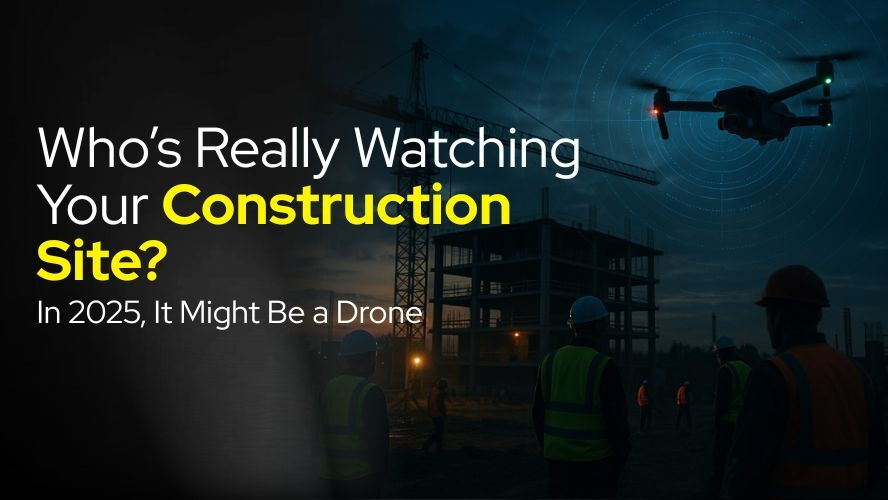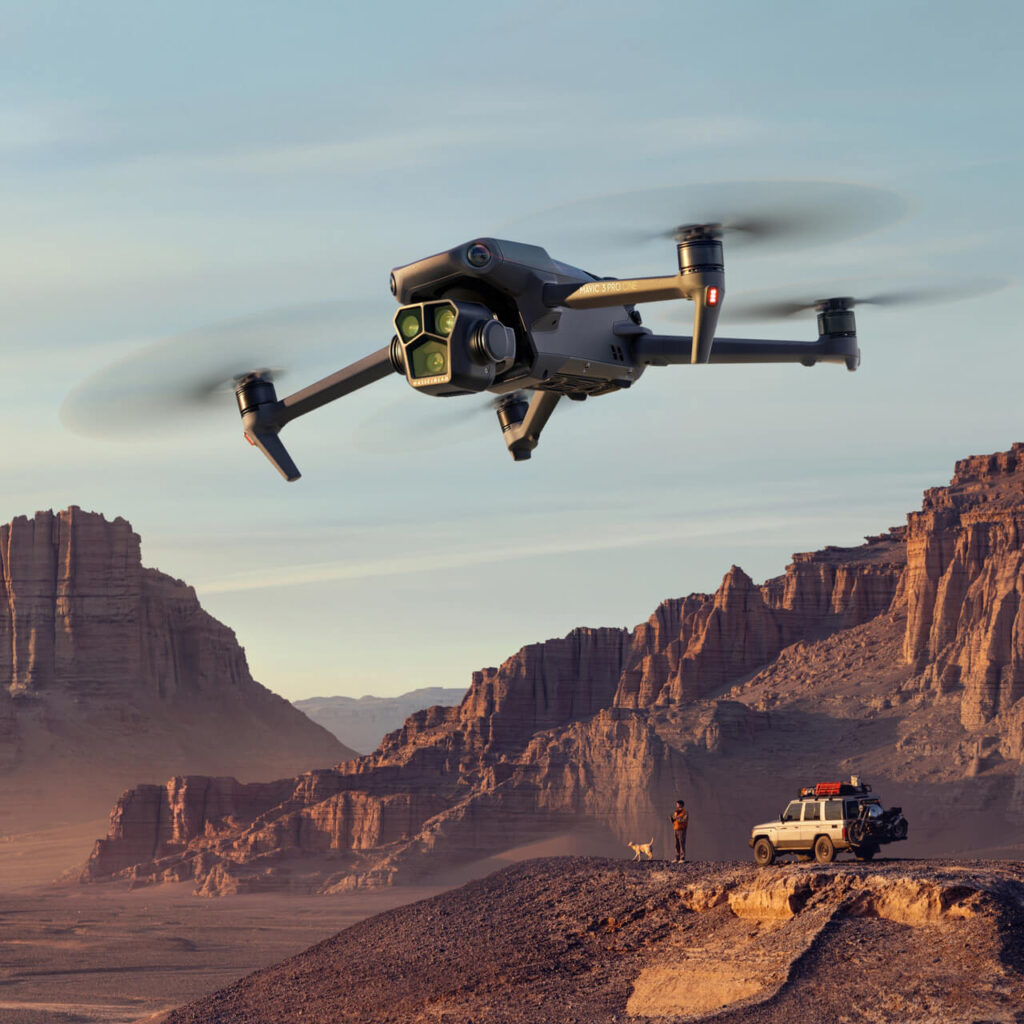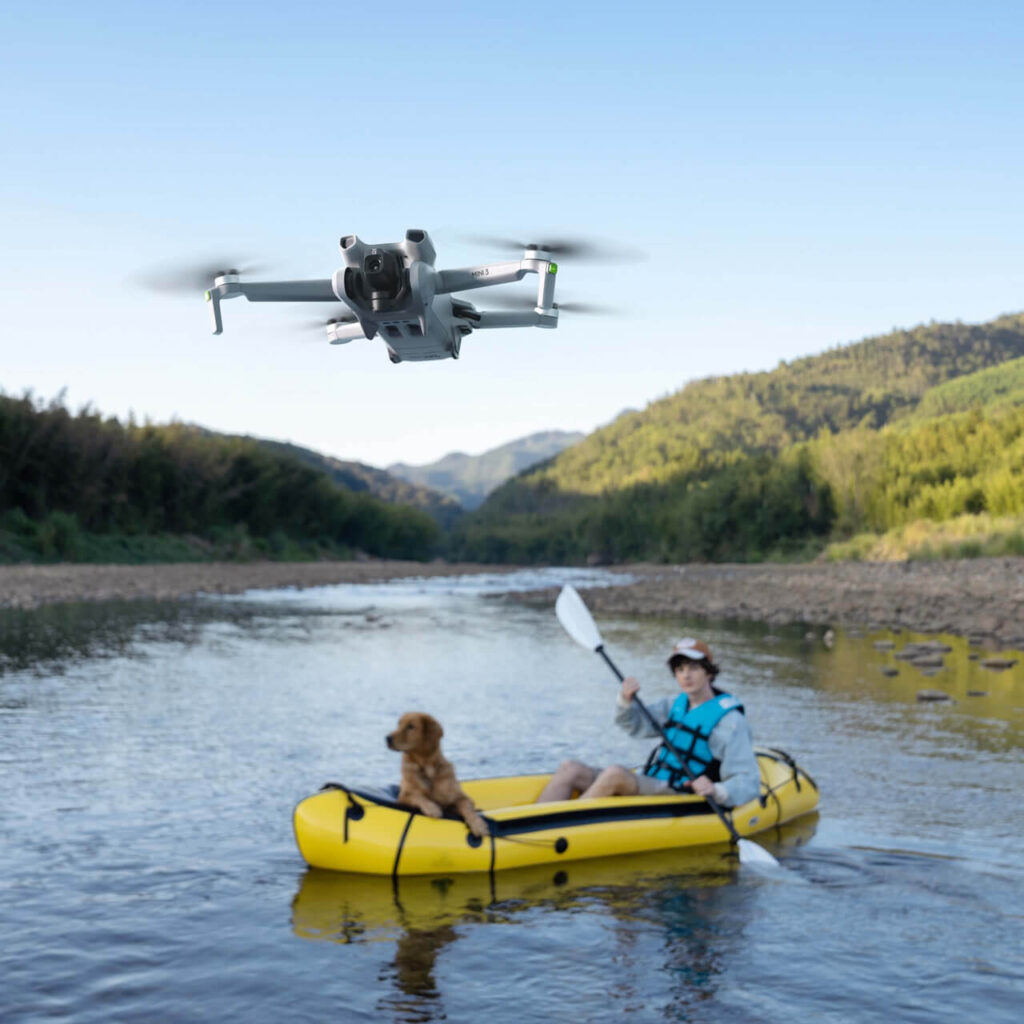The construction industry is undergoing a silent revolution. While workers continue their daily routines on site, an increasing number of watchful eyes are taking to the skies. These aren’t birds or helicopters—they’re sophisticated drones equipped with cutting-edge surveillance technology that’s transforming how construction sites are monitored, secured, and managed.
The New Era of Aerial Oversight
Construction sites have always been vulnerable targets, but traditional monitoring methods are proving inadequate for modern project demands. The shift toward drone-based monitoring represents a fundamental change in how the construction industry approaches site security and project management.
Key advantages of drone surveillance over traditional methods:
• 360-degree coverage: Unlike fixed security cameras, drones provide comprehensive site visibility from multiple angles • Dynamic patrol routes: Flexible flight paths that can be adjusted based on changing site conditions and security needs
• Real-time response capability: Immediate deployment to investigate suspicious activities or safety concerns • Cost-effective monitoring: Single drone operator can oversee multiple construction sites simultaneously • Weather-resistant operations: Advanced models operate effectively in various weather conditions • Immediate incident documentation: High-resolution footage for insurance claims and legal proceedings
Beyond Security: The Multi-Purpose Guardian
Modern construction drones serve multiple critical functions that extend far beyond theft prevention. This multifaceted approach makes them indispensable tools for comprehensive site management.
Primary Applications of Construction Drone Surveillance
| Application | Purpose | Frequency | ROI Impact |
|---|---|---|---|
| Security Monitoring | Theft prevention, unauthorized access detection | 24/7 automated patrols | High – Reduces equipment loss |
| Progress Tracking | Project timeline adherence, milestone documentation | Weekly scheduled flights | Very High – Prevents delays |
| Safety Compliance | Worker safety monitoring, hazard identification | Daily inspections | High – Reduces accidents |
| Equipment Management | Asset tracking, maintenance scheduling | Bi-weekly assessments | Medium – Optimizes utilization |
| Quality Control | Construction standard verification, defect detection | Phase-based inspections | High – Prevents rework |
| Stakeholder Communication | Client updates, investor presentations | As required | Medium – Improves relations |
Detailed Benefits by Category
Security and Loss Prevention: • Monitor high-value equipment and materials during off-hours • Detect unauthorized site access through perimeter surveillance • Provide evidence documentation for insurance and legal purposes • Enable rapid security response through real-time alerts • Reduce security personnel costs while improving coverage effectiveness
Project Management and Progress Monitoring: • Compare actual progress against planned timelines through aerial imagery • Identify potential bottlenecks before they impact project schedules • Document construction phases for quality assurance and compliance • Facilitate remote project oversight for multiple site management • Generate accurate progress reports for stakeholders and clients
Safety and Compliance Monitoring: • Conduct safety inspections without putting personnel at risk • Monitor adherence to safety protocols from safe distances • Identify potential hazards such as unstable structures or equipment positioning • Ensure compliance with regulatory safety requirements • Document safety procedures for training and legal compliance
The Technology Behind the Eyes in the Sky
The effectiveness of construction site drone surveillance relies heavily on advanced technology integration that transforms raw aerial footage into actionable intelligence.
Core Technology Components
Imaging and Sensor Technology: • 4K/8K high-resolution cameras for detailed visual documentation • Thermal imaging sensors for night operations and heat signature detection • LiDAR systems for precise 3D mapping and surveying applications • Multispectral cameras for specialized construction material analysis • Zoom capabilities for detailed inspection without close proximity requirements
AI and Analytics Integration: • Motion detection algorithms that trigger automatic alerts for unauthorized activity • Object recognition systems that can identify specific equipment, vehicles, or personnel • Pattern analysis software that learns normal site operations to detect anomalies • Automated reporting generation for consistent documentation and analysis • Predictive analytics for maintenance scheduling and safety risk assessment
Communication and Control Systems: • Real-time video streaming for immediate monitoring and response • GPS positioning accuracy within centimeter-level precision for surveying • Remote operation capabilities for multi-site management from central locations • Cloud-based data storage with secure access for authorized personnel • Mobile app integration for field personnel and management oversight
Leading Drone Manufacturers in Construction Surveillance
The construction surveillance market features several leading manufacturers who have developed specialized solutions for industry-specific requirements.
DJI Construction Drone Solutions
DJI Matrice 300 RTK – Professional Construction Monitoring
| Specification | Details | Construction Benefit |
|---|---|---|
| Flight Time | Up to 55 minutes | Extended surveillance coverage |
| Weather Resistance | IP45 rating | Reliable operation in harsh conditions |
| Camera Options | Triple-camera payload support | Versatile monitoring capabilities |
| RTK Positioning | Centimeter-level accuracy | Precise surveying and mapping |
| Transmission Range | Up to 15km | Large site coverage capability |
| Night Vision | Thermal imaging available | 24/7 monitoring operations |
| AI Capabilities | Advanced subject tracking | Automated surveillance operations |
Key DJI Advantages for Construction: • Proven reliability in commercial applications with extensive field testing • Comprehensive software ecosystem including flight planning and data analysis tools • Global service network ensuring maintenance and support availability • Integration capabilities with existing construction management software • Regulatory compliance assistance for commercial operations
Autel Robotics Enterprise Solutions
Autel EVO Max 4T – Advanced Construction Surveillance
| Feature | Specification | Application |
|---|---|---|
| Multi-Sensor Payload | Wide-angle, telephoto, thermal, laser rangefinder | Comprehensive site monitoring |
| Obstacle Avoidance | 6-directional binocular vision | Safe autonomous operations |
| Flight Autonomy | 42-minute flight time | Extended patrol capabilities |
| Data Security | Onboard encryption, local storage | Secure project information |
| Weather Performance | Wind resistance up to 38mph | Reliable operation in challenging conditions |
| Remote Operations | Beyond visual line of sight capability | Multi-site management |
Autel Competitive Advantages: • Enhanced data security features with local encryption and storage options • Advanced obstacle avoidance systems reducing operational risks • Competitive pricing compared to market leaders • Growing ecosystem of third-party software integrations • Focus on enterprise security and compliance requirements
Regulatory Considerations and Market Challenges
Current Regulatory Landscape: • Increasing scrutiny of Chinese-manufactured drones for government and critical infrastructure projects • Enhanced licensing requirements for commercial drone operations • Stricter airspace regulations near airports and urban construction sites • Data security requirements for sensitive construction projects • Insurance and liability considerations for autonomous drone operations
From Agriculture to Construction: A Natural Evolution
The adoption of drone technology in construction represents a natural evolution from other industries that have successfully integrated these systems. Just as we explored in our previous discussion about how drones are addressing India’s agricultural labor crisis, the construction industry faces similar challenges that make drone technology particularly attractive.
Industry Parallels and Shared Benefits
| Challenge | Agriculture Application | Construction Application |
|---|---|---|
| Labor Shortages | Automated crop monitoring | Automated site surveillance |
| Safety Concerns | Pesticide application safety | High-risk area monitoring |
| Efficiency Demands | Crop yield optimization | Project timeline adherence |
| Cost Pressures | Reduced operational expenses | Lower security and monitoring costs |
| Scale Management | Large farm coverage | Multiple site oversight |
| Data Collection | Crop health analytics | Progress and compliance documentation |
Scalability Advantages: • Single operator can manage multiple locations simultaneously • Consistent monitoring standards across all sites regardless of location • Centralized data collection and analysis for improved decision-making • Reduced travel time and costs for site inspections • Standardized reporting procedures across different project types
Autonomous Operations and Remote Monitoring
The future of construction site surveillance lies in autonomous drone operations that minimize human intervention while maximizing monitoring effectiveness.
Autonomous Operation Capabilities
Scheduled Patrol Systems: • Pre-programmed flight paths with automatic execution at specified times • Adaptive routing based on real-time site conditions and priority areas • Automated return-to-base functionality with battery management • Weather-dependent scheduling with automatic postponement capabilities • Integration with existing security systems for coordinated response
Remote Operation Benefits: • Multi-site management from centralized control centers • Reduced on-site personnel requirements while maintaining security standards • 24/7 monitoring capability without continuous human oversight • Rapid response deployment to specific incidents or areas of concern • Cost-effective scaling as operations expand to additional sites
Emergency Response Integration: • Automatic deployment triggers based on security system alerts • Direct communication links with local law enforcement and emergency services • Real-time incident documentation for immediate response coordination • Evacuation assistance through aerial crowd monitoring and guidance • Post-incident analysis and evidence preservation
Real-World Impact and Return on Investment
The implementation of construction drone surveillance systems delivers measurable returns across multiple performance indicators.
ROI Analysis Framework
| Cost Category | Traditional Method | Drone Solution | Savings |
|---|---|---|---|
| Security Personnel | $50,000/year per guard | $15,000/year drone operation | 70% reduction |
| Equipment Theft | $25,000/year average loss | $5,000/year with monitoring | 80% reduction |
| Insurance Premiums | $100,000/year | $80,000/year with documentation | 20% reduction |
| Project Delays | $200,000/year delay costs | $50,000/year with early detection | 75% reduction |
| Safety Incidents | $150,000/year incident costs | $75,000/year with monitoring | 50% reduction |
Documented Benefits from Implementation
Immediate Impact Indicators: • Theft reduction: 60-80% decrease in equipment and material theft • Incident response time: 50% faster response to security breaches • Project visibility: 90% improvement in stakeholder communication • Safety compliance: 40% reduction in safety violations • Documentation accuracy: 95% improvement in progress reporting
Long-term Strategic Advantages: • Enhanced client confidence through transparent project monitoring • Improved bidding competitiveness with demonstrated monitoring capabilities • Reduced insurance costs through documented risk mitigation measures • Better resource allocation through accurate site condition assessment • Strengthened legal position with comprehensive incident documentation
Implementation Challenges and Solutions
Despite significant benefits, construction drone surveillance implementation requires careful planning and consideration of various challenges.
Common Implementation Challenges
| Challenge | Impact | Solution Strategy |
|---|---|---|
| Regulatory Compliance | Flight restrictions, licensing | Professional consultation, compliance software |
| Weather Dependencies | Reduced operational availability | Multiple drone fleet, weather monitoring |
| Technical Complexity | Training requirements, maintenance | Comprehensive training programs, service contracts |
| Initial Investment | High upfront costs | Phased implementation, leasing options |
| Data Management | Storage and analysis requirements | Cloud-based solutions, automated processing |
| Privacy Concerns | Legal and community relations | Clear policies, restricted flight zones |
Best Practices for Successful Implementation
Pre-Implementation Planning: • Conduct comprehensive site assessment for optimal drone deployment strategies • Develop clear policies and procedures for drone operations and data handling • Establish training programs for operators and management personnel • Create integration plans with existing security and project management systems • Implement data backup and security protocols for sensitive project information
Operational Excellence: • Regular maintenance schedules to ensure consistent performance and reliability • Continuous training updates to keep pace with technology and regulatory changes • Performance monitoring and optimization based on actual operational data • Regular review and updates of flight plans based on changing site conditions • Documentation and analysis of incidents for continuous improvement
The Future of Construction Site Monitoring
As we advance through 2025, the integration of drone technology in construction site monitoring continues evolving toward more sophisticated and autonomous systems.
Emerging Technology Trends
Advanced AI Integration: • Predictive analytics for proactive issue identification and resolution • Machine learning algorithms that improve monitoring effectiveness over time • Automated report generation with actionable insights and recommendations • Integration with Building Information Modeling (BIM) for enhanced project oversight • Real-time decision support systems for immediate operational adjustments
Enhanced Connectivity and Communication: • 5G network integration for improved real-time data transmission • Internet of Things (IoT) sensor integration for comprehensive site monitoring • Augmented reality interfaces for enhanced visualization and analysis • Direct integration with construction management software platforms • Automated coordination with other construction automation systems
Market Evolution and Industry Adoption
The construction industry’s embrace of drone surveillance represents more than just technological advancement—it’s a fundamental shift toward data-driven project management and risk mitigation.
Industry-Wide Transformation Indicators: • Major construction companies incorporating drone operations as standard practice • Insurance companies offering premium reductions for documented drone surveillance programs • Regulatory frameworks evolving to support expanded commercial drone operations • Educational institutions developing specialized training programs for construction drone operations • Technology vendors focusing specifically on construction industry applications
Conclusion
The question facing construction companies in 2025 isn’t whether drone surveillance technology offers value—the evidence clearly demonstrates significant returns on investment across security, project management, and operational efficiency. The real question is how quickly organizations can implement comprehensive drone monitoring systems that align with their specific operational requirements and strategic objectives.
Construction drone surveillance has evolved beyond simple theft prevention to become an integral component of modern project management, safety compliance, and stakeholder communication. The technology’s proven success in agricultural applications, as discussed in our previous analysis of India’s agricultural labor challenges, provides a strong foundation for its continued expansion in construction environments.
As autonomous systems become more sophisticated and regulatory frameworks continue evolving to support expanded commercial operations, construction companies that implement drone surveillance now will gain significant competitive advantages in project delivery, risk management, and client satisfaction. The watchful eyes in the sky aren’t just monitoring construction sites—they’re actively contributing to the industry’s digital transformation and operational excellence.
Ready to revolutionize your construction site monitoring? If you’re looking for comprehensive construction services that integrate advanced drone surveillance and modern project management techniques, visit Jetayu Gadgets to discover how we can bring your project to successful completion.




